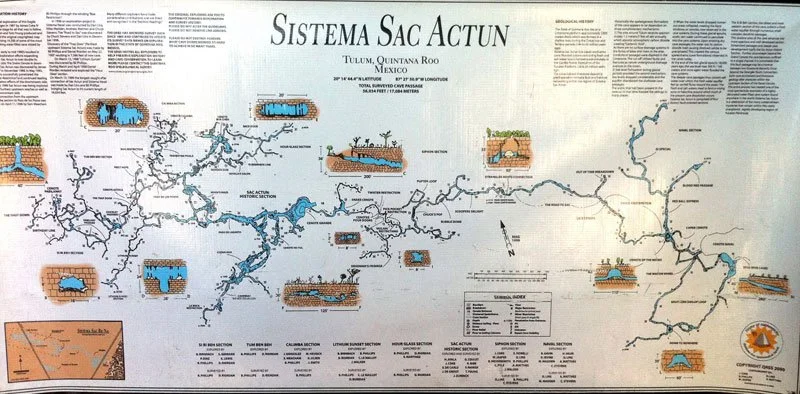Cenotes near Tulum: Access to the The Mayan Underground World
Beneath the lush jungles of Tulum lies a hidden world that breathes life into the region — a vast network of cenotes, flooded caves, and underground rivers that connect past and present, myth and science.
To understand the true meaning of cenotes; as both ecological treasures and cultural memory keepers, we sat down with Guillermo de Anda, underwater archaeologist, cave explorer, and National Geographic researcher. His life’s work has been devoted to unveiling the mysteries of the Great Maya Aquifer, an immense subterranean system stretching for more than 2,000 kilometers between Tulum and Cancún.
The Cenote: More Than a Mystical Pool
They are living ecosystems, sacred to the Maya, and still vital to our survival today.
The Yucatán Peninsula floats atop a porous limestone platform, and beneath it lies a vast aquifer, an intricate web of flooded caves and passages that serve as natural water reservoirs for the entire region. These underground rivers are not only the foundation of life in the Riviera Maya, but also time tunnels that preserve the story of an ancient civilization.
Exploring the Great Maya Aquifer
As the director of the Great Maya Aquifer Project, Guillermo leads an interdisciplinary team of archaeologists, biologists, and technologists who study the biodiversity and cultural heritage hidden in these submerged labyrinths.
Their research, recently summarized in the book Explorations of the Underground World: An Approach to the Great Maya Aquifer, reveals the deep connection between nature, history, and modern life in the region. The publication — co-edited by the Aspen Institute Mexico and UNAM, with support from INAH — presents essays written by leading scientists, offering a bridge between academic research and public understanding.
“The exploration of submerged cultural heritage is more than a scientific endeavor,” Guillermo explains. “It’s a way of life — a commitment to preserving what sustains us both physically and spiritually.”
Sistema Sac Actun, Riviera. Maya


